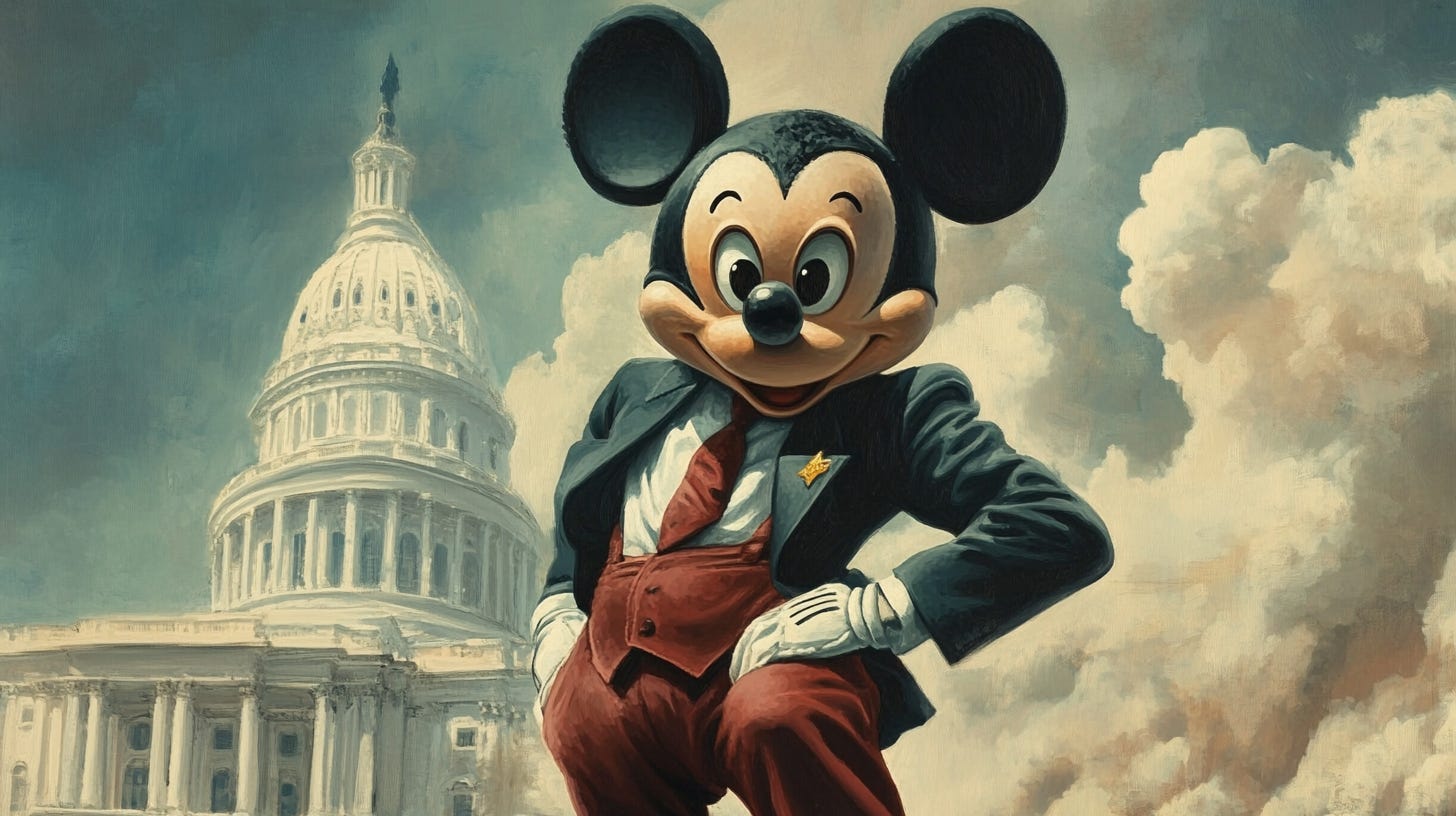Insider.Notes // Who Owns the Infinite Copy?
This isn’t about Shrek or Mickey Mouse—it’s about legacy giants trying to fence off culture while the rest of us are already living in the remix.
Welcome to Insider Notes, the end-of-week intelligence drop from Creative Machinas. Each edition examines a single tension, threshold, or paradox shaping the intersection of AI, culture, and creative futures. It’s where signals turn into questions — and where thinking goes deeper than the surface.
TOP SIGNAL
Midjourney Isn’t Just on Trial—Copyright’s Entire Operating System Is
Shrek, Mickey, and Vader are just the bait. What’s really on the stand is the legal scaffolding of the 20th-century creative economy.
Hollywood’s lawsuit against generative AI marks a historic moment: not just a clash over images of Shrek or Darth Vader, but a systemic reckoning with 20th-century copyright in a 21st-century replication economy.
Disney and Universal’s joint lawsuit against Midjourney brands the platform “a bottomless pit of plagiarism”—but the deeper issue isn’t image theft. It’s that copyright law, designed for scarcity and control, is now colliding with a creative culture of infinite replication. With AI-generated outputs indistinguishable from studio originals and trained on the very IP it replicates, the case pushes one question to the surface: Can copyright even function when copy and paste is the creative default?
The lawsuit demands more than damages. It demands a new legal imagination. Because behind the prompt of “Darth Vader eating ramen in the style of Pixar” is something larger: a breakdown of the system built to contain it.
(Sources: The Verge, PC Gamer, PCMag)
WHY IS MATTERS
This is the Napster moment for visual culture. What Disney and Universal are trying to stop isn’t just unauthorised images—it’s the collapse of copyright’s gatekeeping function. Generative AI has made replication frictionless, decentralised, and unstoppable. The law, as it stands, wasn’t built for that.
If courts treat generative training as unlawful appropriation, they risk cutting off the very mechanisms now powering modern creativity. If they allow it carte blanche, they may gut the last enforceable protections for original creators. But either way, the underlying system—copyright as gate, not graph—is buckling.
This lawsuit is a signal flare: users, not platforms, now wield the tools of reproduction. Cultural participation is outpacing cultural control. As the Deep Signal notes, the real question isn’t whether Midjourney infringed—it’s whether the law can survive a world where every desktop is a studio and every prompt is a production line. If not, we’re protecting Mickey Mouse while losing the entire future of creative engagement.
DEEP SIGNAL
What begins as a dispute over AI art conceals a much deeper reckoning with the legal infrastructure of creativity.
The MidJourney Lawsuit and the Infrastructural Collapse of Copyright
Why a generative art lawsuit is actually a stress test for the entire architecture of copyright.
This moment invites a deeper interrogation: what happens when a system designed to govern friction and scarcity meets technologies built on infinite replication? The MidJourney lawsuit is just the most visible pressure point—but underneath it lies a much broader misalignment between 20th-century legal assumptions and 21st-century creative architectures. We’re not just confronting new tools; we’re confronting a new cultural substrate.
THE TL;DR:
Trying to enforce copyright in a world of infinite, individual-level replication is like trying to shut down Napster all over again. People have already moved beyond centralised, gate-kept models of cultural control. Just like the music industry had to adapt, copyright will need to meet users where they already are—by shifting from restriction to participation, and from ownership to infrastructure.
A Showdown of Systems
Copyright's scarcity logic is colliding with a culture of infinite replication—and this case makes the impact visible.
Legacy copyright emerged in a world where reproduction was costly and access was gated. Its architecture depends on friction: limited copies, high thresholds for duplication, and institutional enforcement . Generative AI collapses all that. As replication becomes trivial, copyright’s reliance on scarcity as a control mechanism falls apart. We now live in a reality where anyone with a prompt can summon a Pixar-grade clone, rendering reproduction effortless and high fidelity at the individual level.
Keep reading with a 7-day free trial
Subscribe to Creative Machinas to keep reading this post and get 7 days of free access to the full post archives.





